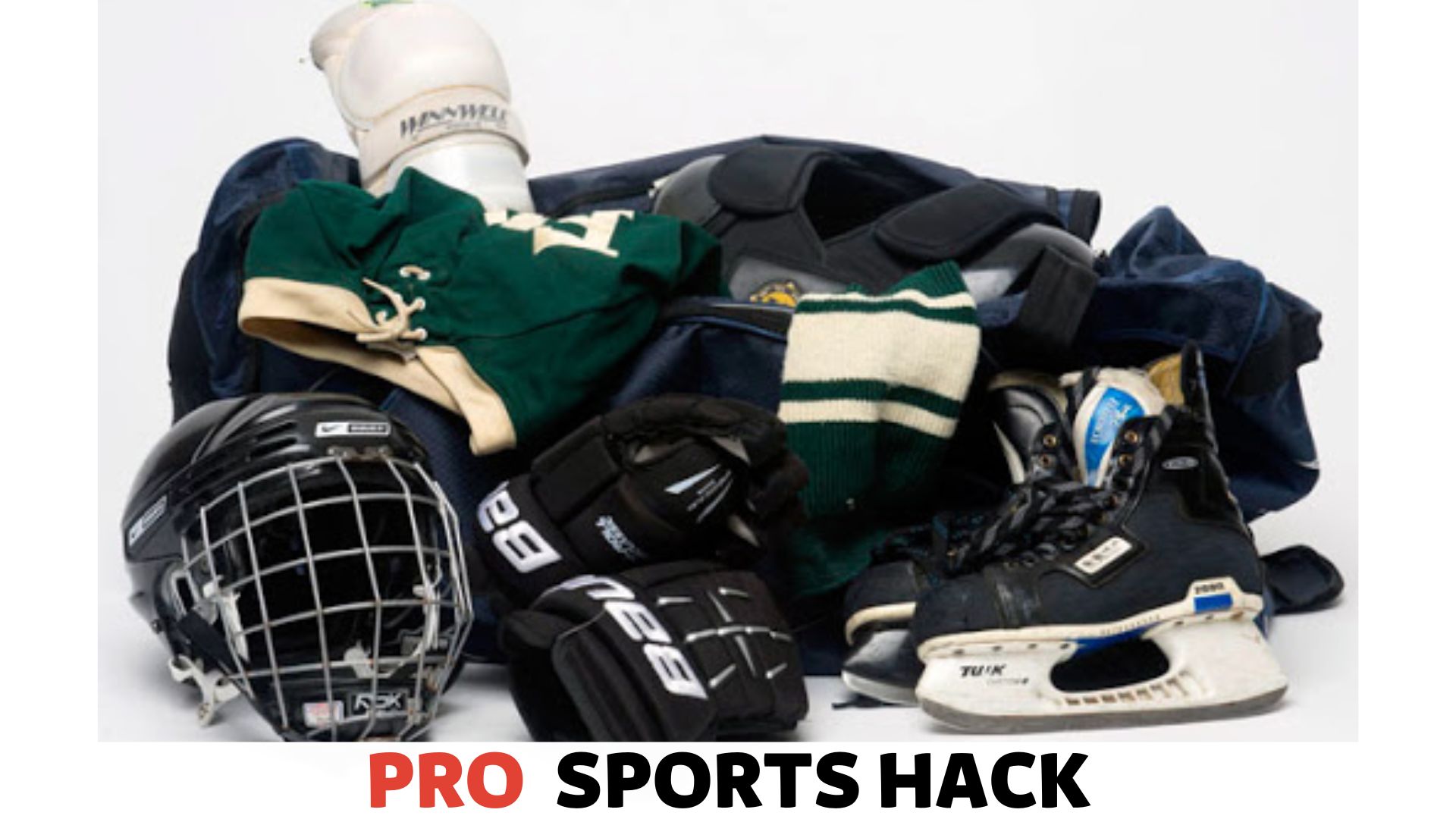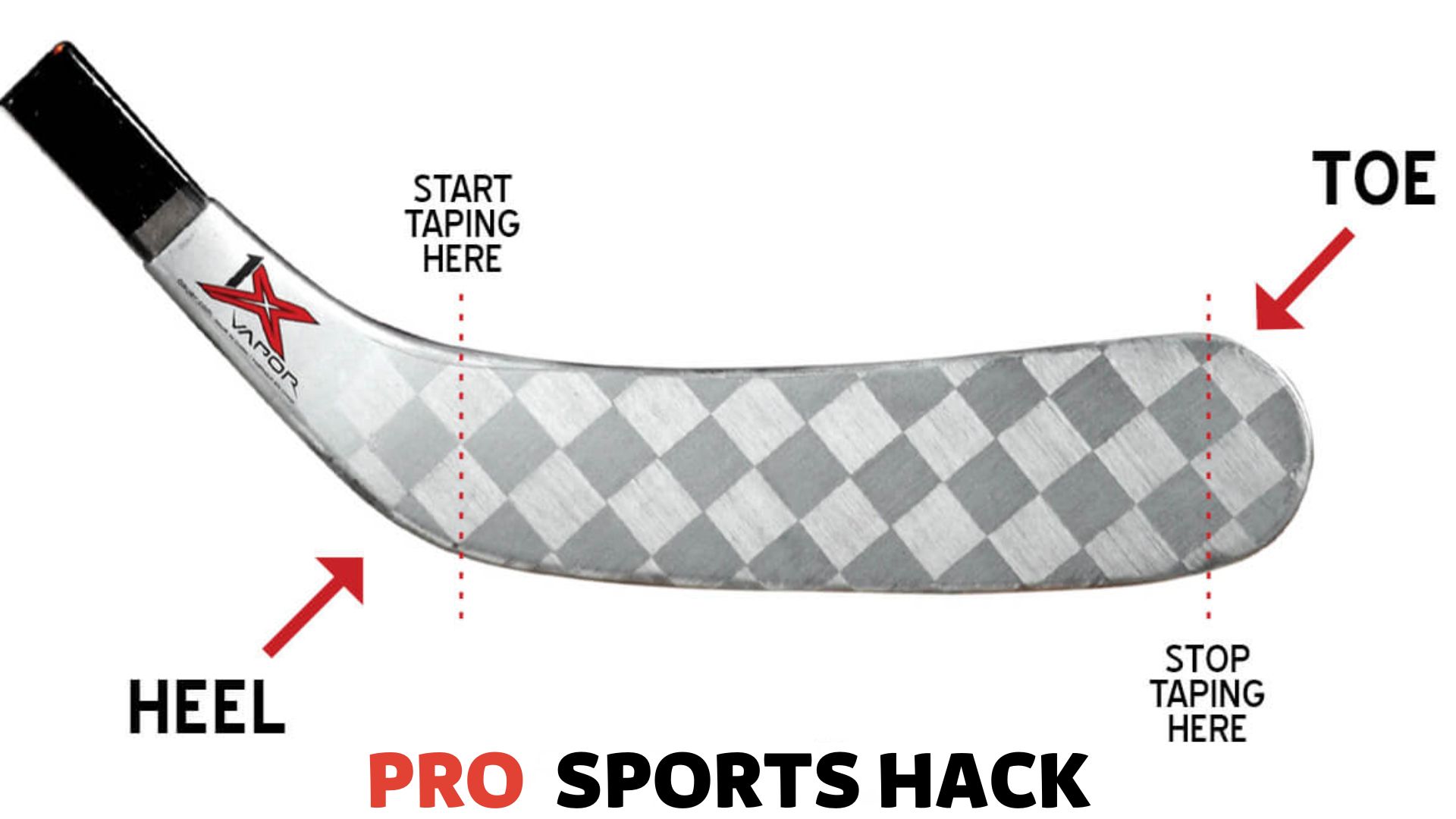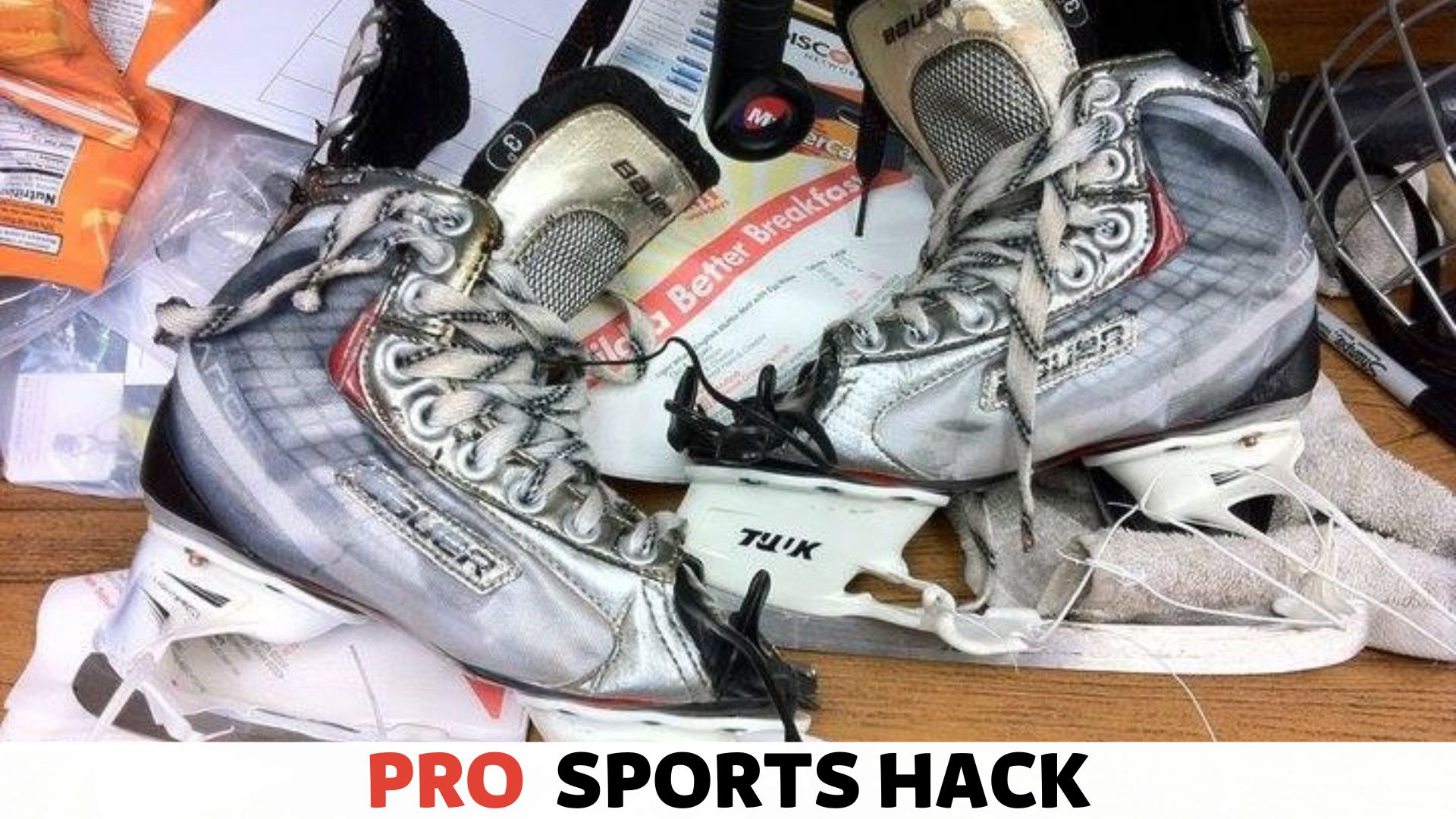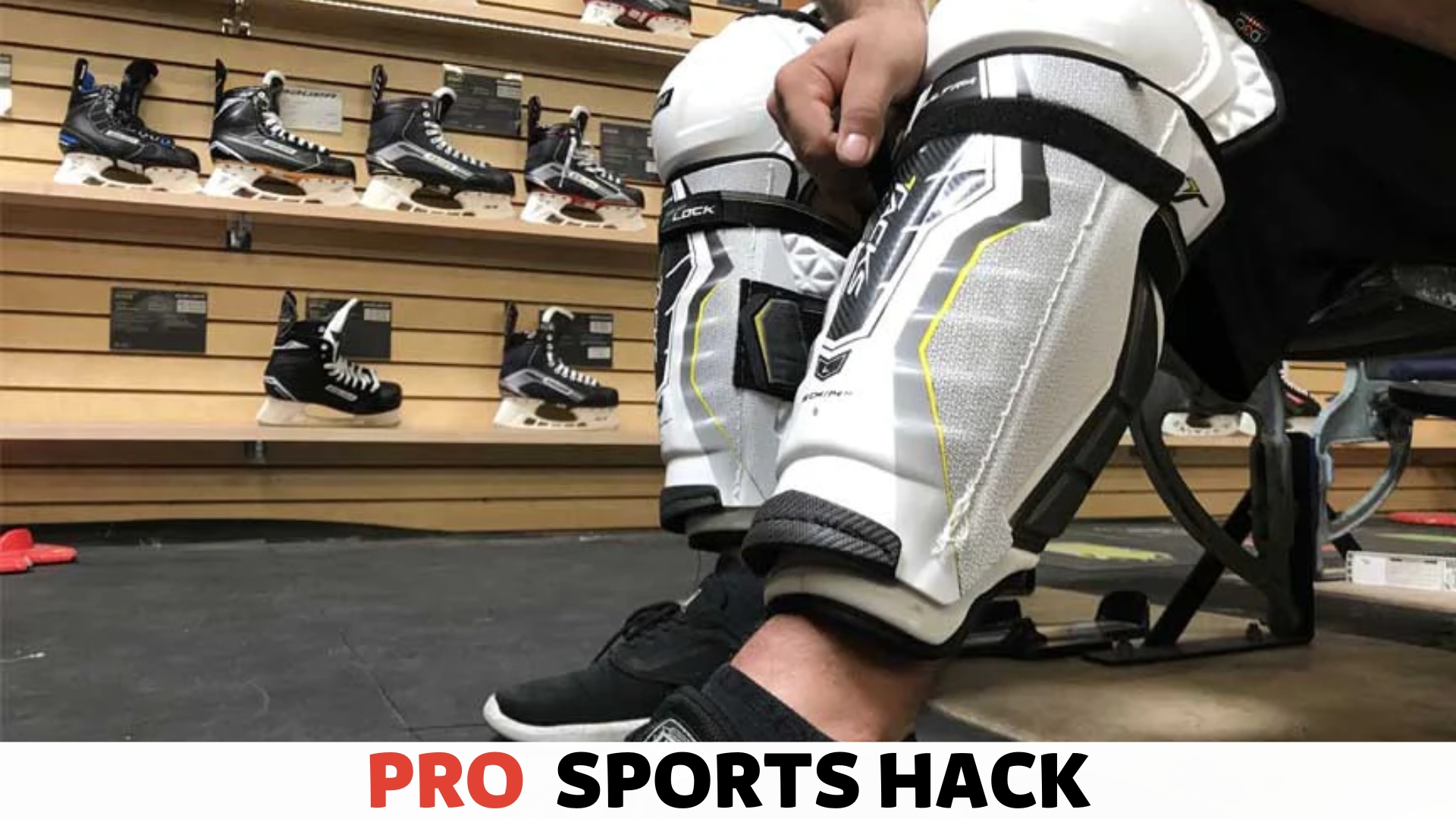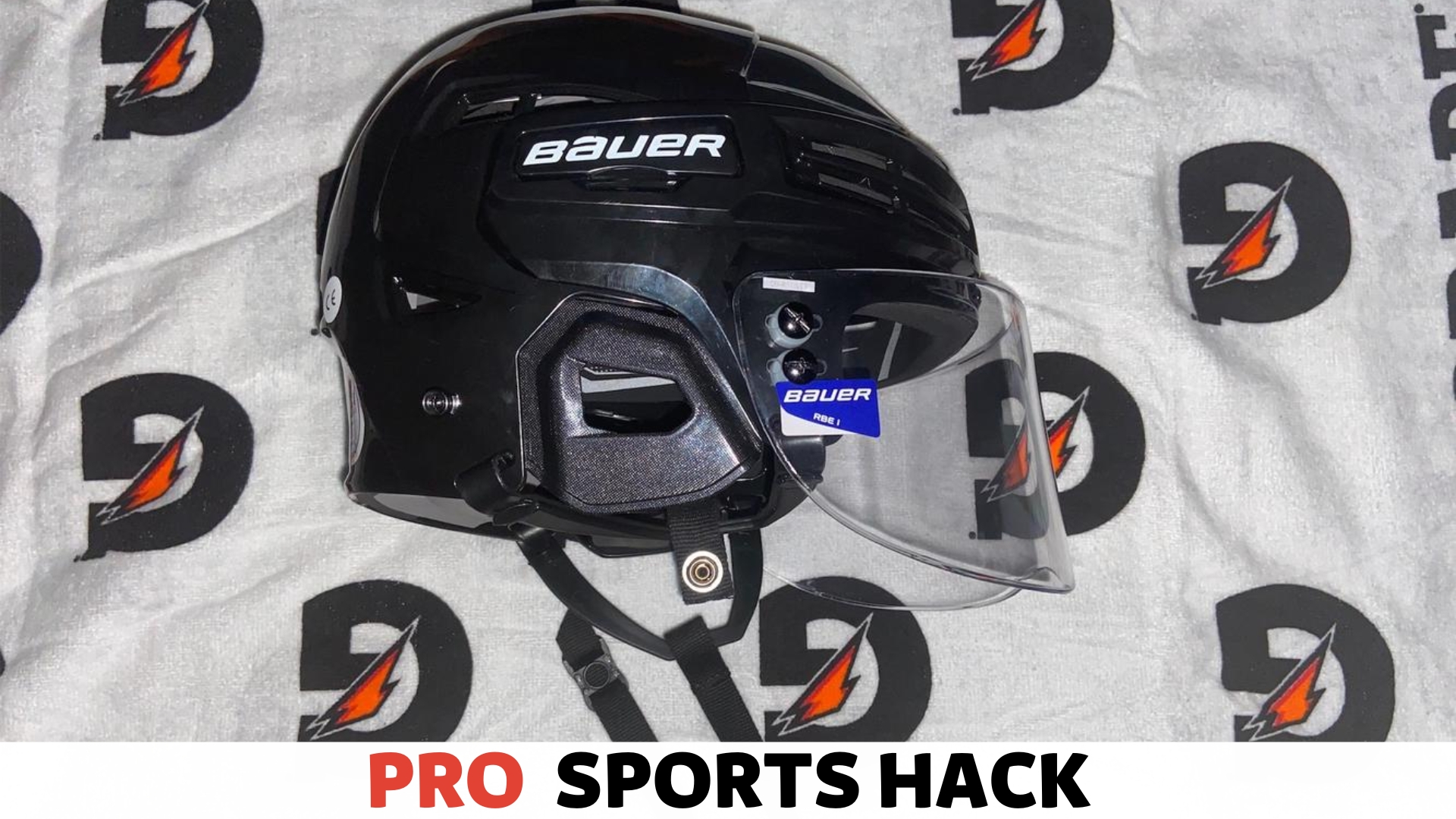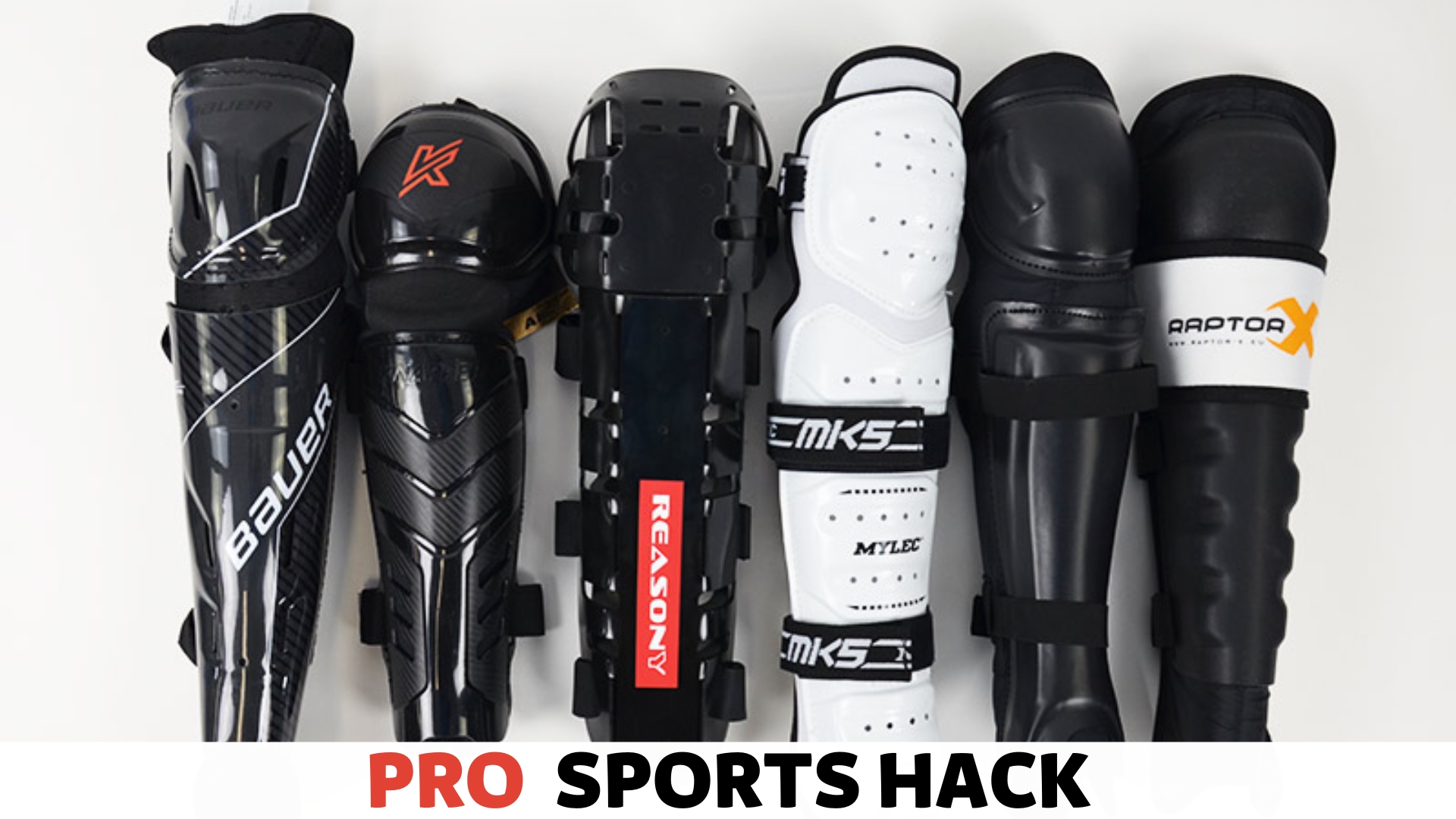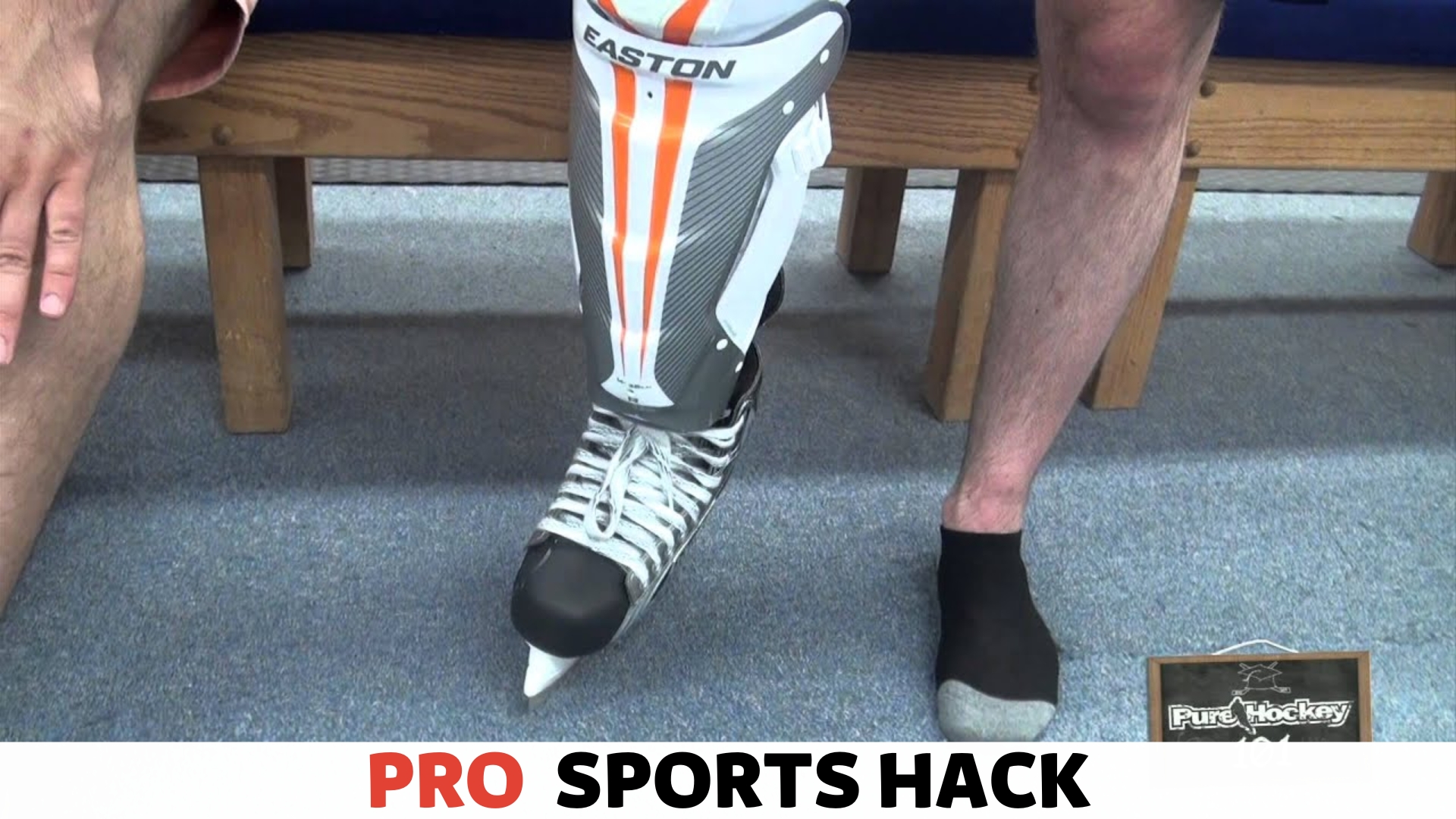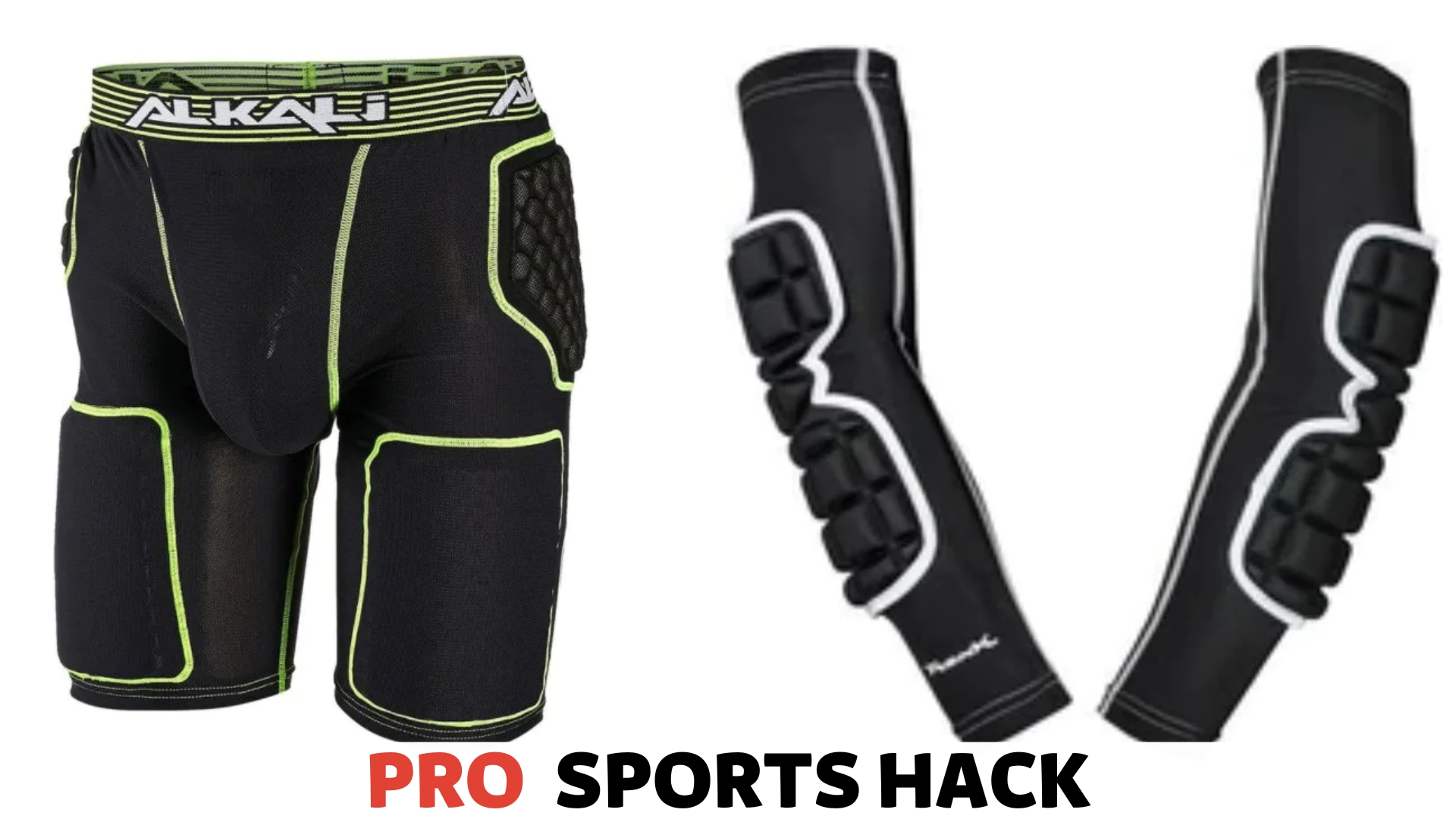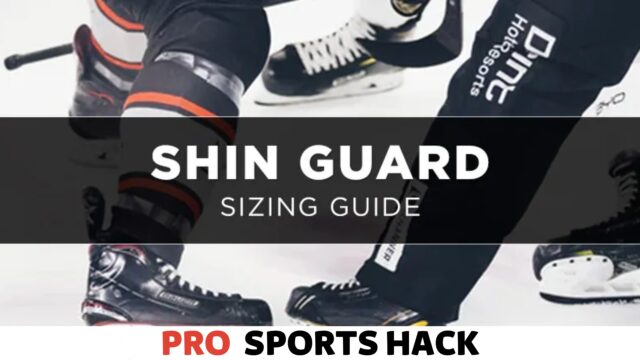
Finding the perfect fit for your hockey shin pads is crucial for optimal performance and protection. This ultimate size guide will help you find the right size quickly and accurately.
When it comes to hockey shin pads, having the right fit is essential for both comfort and safety. Ill-fitting shin pads can cause discomfort, hinder movement, and expose you to potential injuries on the ice.
Therefore, finding the perfect size for your shin pads is crucial.
In this comprehensive guide, we will walk you through the necessary steps to determine your ideal shin pad size.
From measuring your leg properly to understanding the different sizing options available, you will have all the information you need to make an informed decision.
So, let’s dive into the world of hockey shin pads and find your perfect fit.
Determining the Correct Size Based on Measurements
When it comes to finding the perfect fit for your hockey shin pads, correctly measuring your leg is crucial. This will ensure optimal comfort, protection, and performance on the ice.
In this section, we will discuss how to match your measurements with size charts and take into consideration your player position and style of play.
Matching Your Measurements With Size Charts
Measuring your leg accurately is the first step in finding the right shin pad size.
To do this, you will need a flexible tape measure. Start by placing the tape measure against the center of your knee and measure down to the top of your ankle.
Make sure the tape is snug but not too tight. Take note of this measurement in inches, which will be crucial in finding the right size.
Once you have your leg measurement, refer to the size chart provided by the shin pad manufacturer. The size chart will outline the corresponding pad size based on your measurement.
Remember that different brands may have slight variations in their size charts, so it’s important to consult the specific manufacturer’s chart for accurate sizing.
| Leg Measurement (inches) | Shin Pad Size |
|---|---|
| 12 – 13.5 | Small |
| 13.5 – 14.5 | Medium |
| 14.5 – 15.5 | Large |
| 15.5 – 17 | X-Large |
For example, if your leg is 14 inches, a medium-sized shin pad would suit you according to the provided size chart.
It’s important to note that this is just a general guideline, and personal preference may also play a role in the final decision. Depending on their playing style, some players prefer a tighter or looser fit.
When delving into the world of hockey gear, understanding how should hockey shin guards fit is crucial for both performance and safety on the ice.
Considering Player Position and Style of Play
In addition to measurements, it’s essential to consider your player position and style of play when selecting shin pads. Defenders who engage in physical play and block shots may prefer larger-sized shin pads for maximum protection.
On the other hand, forwards who focus on speed and agility might opt for smaller-sized shin pads, as they offer more mobility. It’s all about balancing protection and maneuverability that suits your playing style.
Furthermore, the design and materials used in shin pads can vary. Some shin pads offer additional features, such as extended calf protection or customizable straps. These features can enhance comfort and performance based on your specific needs.
In conclusion, determining the correct size for your hockey shin pads involves measuring your leg accurately and referring to the manufacturer’s size chart.
Additionally, considering your player position and style of play will help you find the perfect fit that offers both protection and performance on the ice.
Different Types of Shin Pads Available
The Ultimate Hockey Shin Pads Size Guide is here to help you find your perfect fit, ensuring maximum protection and comfort on the ice. When it comes to shin pads, there are several different types available, each offering its unique benefits.
In this article, we will explore the three main types of shin pads: traditional strap-on shin pads, slip-on shin pads, and tapered shin pads.
Traditional Strap-On Shin Pads
Traditional strap-on shin pads are the most commonly used type in hockey. They are designed with adjustable straps that fasten around the leg, providing a secure fit.
These shin pads typically have a hard plastic shell that covers the front of the leg, offering excellent protection against impact.
One of the main advantages of traditional strap-on shin pads is their versatility. They can be easily adjusted to fit players of different sizes, making them suitable for juniors and adults.
These shin pads often come with removable or adjustable padding, allowing you to customize comfort and protection.
Slip-On Shin Pads
As the name suggests, slip-on shin pads are designed to be slipped on directly onto the leg without needing straps or fasteners. They offer a streamlined, lightweight option for hockey players who prefer a more minimalistic design.
Slip-on shin pads are constructed with a flexible sleeve that snugly fits around the leg, providing a secure and comfortable fit.
One of the key benefits of slip-on shin pads is their ease of use. You can quickly slide them on and off without fussing with straps or buckles. This makes them popular for players who value convenience and prefer a hassle-free pre-game routine.
However, it’s important to note that slip-on shin pads may not provide the same level of customization and adjustability as traditional strap-on shin pads.
Tapered Shin Pads
Tapered shin pads are a more recent innovation in hockey equipment. These shin pads are designed with a contoured shape that follows the natural curves of the leg, providing a more anatomical fit.
The tapered design reduces bulkiness around the calf area, allowing for improved mobility and flexibility on the ice.
One of the main advantages of tapered shin pads is their improved comfort and range of motion. The contoured shape helps to prevent the shin pads from shifting or rotating during gameplay, ensuring a secure fit at all times.
Additionally, tapered shin pads often incorporate advanced materials and padding technologies, offering enhanced impact absorption and cushioning.
Now that you are familiar with the different types of shin pads available, it’s important to consider your preferences and needs before making a decision. Whether you opt for traditional strap-on shin pads, slip-on shin pads, or tapered shin pads, finding the perfect fit is crucial for your performance and safety on the ice.
Levels of Protection Offered By Different Shin Pads
Protecting your shins should be a top priority when it comes to playing hockey. Shin pads provide essential protection and enhance your performance on the ice. However, not all shin pads are created equal regarding levels of protection.
Understanding shin pads’ different levels is crucial in finding your perfect fit and ensuring your safety.
In this guide, we will explore the three main levels of shin pad protection: entry-level, mid-range, and high-end.
For those passionate about field hockey, navigating the nuances of field hockey shin guards sizing becomes a pivotal step in optimizing comfort and protection during intense matches.
Entry-level Shin Pads
If you’re just starting out in hockey or are on a budget, entry-level shin pads can be a great option. These shin pads are designed to provide basic protection while keeping costs down.
They typically feature a lightweight design along with a single or double-strap system to secure them in place.
While entry-level shin pads may not offer the same level of protection as their higher-end counterparts, they still provide adequate shielding against impacts and slashes.
They are an excellent choice for beginners or recreational players who don’t engage in aggressive gameplay.
Mid-range Shin Pads
Mid-range shin pads are the way to go for players looking for a balance between protection and affordability. These shin pads offer more advanced features than entry-level options, providing enhanced protection without breaking the bank.
Mid-range shin pads often include additional padding or foam inserts strategically placed to absorb and distribute impact forces. They may also incorporate reinforced materials in critical areas for added durability and protection.
These features make mid-range shin pads suitable for players who want intermediate-level protection without stepping up to the high-end price range.
High-end Shin Pads
If you are a serious hockey player or regularly engage in highly competitive gameplay, investing in high-end shin pads is essential. These shin pads are designed to offer uncompromising protection and advanced features to meet the demands of intense play.
High-end shin pads employ cutting-edge technologies and materials to maximize protection while maintaining a lightweight and comfortable feel. They often feature multi-layered construction with shock-absorbing foams and dispersion systems to minimize the impact of hits and slashes.
In addition to superior protection, high-end shin pads prioritize mobility and flexibility, allowing players to move freely on the ice without compromising safety.
Adjustable strapping systems and customizable fit options are frequently incorporated to ensure a snug and secure fit.
While high-end shin pads may come with a higher price tag, the added protection and performance advantages they offer are worth it for serious players looking to take their game to the next level.
Now that you have a better understanding of the different levels of protection offered by shin pads, you can make an informed decision when choosing the perfect fit for you.
Whether you opt for an entry-level, mid-range, or high-end shin pad, remember that finding the right size and fit is just as important as the level of protection it offers.
Protect your shins, enhance your performance, and enjoy the game with shin pads that meet your needs and preferences.
Factors to Consider for Comfort and Mobility
Finding the perfect fit for your hockey shin pads is crucial for comfort and mobility on the ice. You want to ensure that your shin pads provide adequate protection without hindering your movement or causing discomfort during gameplay.
In this guide, we will explore the various factors to consider for comfort and mobility, including the materials and construction of the shin pads, ankle and calf protection, and the strapping systems.
Materials and Construction
The materials and construction of your hockey shin pads play a significant role in both comfort and mobility. The outer shell of the shin pads is typically made of hard plastic, which offers excellent protection against pucks and sticks.
However, the inner padding provides the comfort and flexibility you need on the ice.
The padding should be made of high-density foam that molds to the shape of your leg, providing a snug fit without restricting movement.
Look for shin pads with moisture-wicking properties to keep your legs cool and dry during intense gameplay.
Additionally, some shin pads feature ventilation channels to enhance airflow, preventing excessive heat buildup.
Ankle and Calf Protection
Ankle and calf injuries are common in hockey, so choosing shin pads that offer adequate protection in these areas is crucial. Look for shin pads with extended padding around the ankle and calf to provide added support and absorb impacts from collisions.
Some shin pads include extra calf wraps or detachable calf sleeves for customizable protection. These additional features ensure that your ankles and calves are well-protected without compromising your mobility on the ice.
Strapping Systems
The strapping system of your shin pads is essential for a secure and comfortable fit. Most shin pads feature adjustable straps with Velcro closures that allow you to tighten or loosen the pads according to your preference.
Consider the placement and number of straps on the shin pads. Multiple straps offer more customization options, allowing you to achieve the perfect fit for your legs.
Look for padded straps to enhance comfort and prevent them from digging into your skin during gameplay.
Some shin pads also come with additional elastic straps or sleeves to secure the pads further and prevent them from shifting during intense movements.
These straps and sleeves provide extra stability, allowing you to focus on your game without worrying about readjusting your shin pads.
In conclusion, when it comes to comfort and mobility, paying attention to the materials and construction, ankle and calf protection, and the strapping system of your hockey shin pads is crucial.
Investing in well-fitting shin pads that provide the right balance of protection and flexibility will enhance your performance on the ice and ensure your safety during gameplay.
Exploring the care routine for your sports equipment, a common question arises: Can football gloves be washed? Discover the proper maintenance techniques to keep your gear fresh and ready for the next game.
Special Considerations for Junior Hockey Players
Growth and Adjustability
Junior hockey players are constantly growing, and their equipment needs to keep up. When choosing shin pads for junior players, growth and adjustability are crucial.
Look for shin pads that offer adjustable straps and sizing options, allowing room for growth over time. Adjustable shin pads can be easily modified to accommodate a player’s changing size, saving you the hassle and expense of frequently purchasing new equipment.
Child-specific Shin Pad Options
Children have unique needs regarding protective hockey equipment, and shin pads are no exception. To ensure proper fit and comfort, child-specific shin pad options are designed specifically for young players.
These shin pads are typically lighter and more flexible than adult ones, providing maximum mobility while offering adequate protection.
Child-specific shin pads also come in various sizes and styles to accommodate children of different ages and skill levels. When shopping for shin pads for junior hockey players, explore these child-specific options to find the perfect fit.
Trying on Different Shin Pads
When choosing the right hockey shin pads, trying them on is essential in ensuring the perfect fit. Trying on different shin pads allows you to assess crucial factors such as proper coverage, protection, comfort, and mobility.
In this guide, we will explore how to find your perfect fit by trying on various shin pads.
Ensuring Proper Coverage and Protection
One of the most important aspects of choosing the right shin pads is ensuring proper leg coverage and protection. Shin pads are designed to shield your shins from slashes, hits, and stray pucks, so finding a pair that offers adequate coverage for your entire shin area is crucial.
To assess the coverage, carefully examine the length of the shin pad. It should extend from just below your kneecap to the top of your skate tongue. This ensures that your shins are fully protected from top to bottom.
Additionally, pay attention to the width of the shin pad to ensure it covers the sides of your legs, safeguarding them from any potential impacts.
During fitting, bend your knees and take a few strides to ensure the shin pads stay in place and offer complete protection without shifting. This will help prevent any vulnerability or exposed areas during gameplay.
Assessing Comfort and Mobility
Another crucial aspect to consider when trying on different shin pads is their level of comfort and mobility. Hockey is a fast-paced sport, and you need shin pads that do not hinder your movements and allow you to skate with agility.
Pay attention to the padding inside the shin pad. It should provide a snug fit without causing discomfort or restricting movement.
The padding should evenly distribute the impact of any blows, ensuring that you can still move freely while keeping you protected. Look for shin pads with moisture-wicking properties to keep your legs dry and comfortable throughout the game.
Take a few laps around the store or skate on the ice if it is available to test the mobility of the shin pads. Ensure that you can flex your knees and ankles comfortably without any restrictions.
Frequently Asked Questions
How Do You Know What Size Hockey Shin Pads to Get?
To determine the right size of hockey shin pads, measure the length from the middle of your knee to your ankle bone. Use this measurement as a guideline when choosing the appropriate size from the sizing chart provided by the manufacturer.
How Should Shin Pads Fit for Hockey?
Shin pads for hockey should fit snugly and cover the entire shin, from the knee to the top of the skate. They should not restrict movement or slip during play. Try them with your hockey socks and skates to ensure a proper fit and protection.
How Do I Know If My Shin Pads Fit?
To ensure your shin pads fit properly, follow these steps:
- Measure your leg’s circumference to determine the appropriate size.
- Put on the shin pads and fasten them securely using the straps.
- Check for a snug yet comfortable fit that doesn’t restrict movement.
- Ensure the shin pads cover the shinbone entirely.
- Test them by moving and bending your leg to ensure they stay in place.
What Size Shin Guards Do I Need?
To determine the right size shin guards, measure the distance from your ankle to just below your knee. Refer to the sizing chart provided by the manufacturer to find the corresponding size. Remember, proper sizing ensures optimum protection and comfort during sports activities.
What Size Hockey Shin Pads Do I Need?
You need to measure your leg length and refer to the manufacturer’s sizing chart for the perfect fit.
Conclusion
After going through this ultimate hockey shin pad size guide, you have all the necessary information to find your perfect fit. Remember, the right size is essential for optimal performance and protection on the ice.
By measuring your leg properly, considering the different pad lengths, and considering your personal preferences, you can ensure a comfortable and secure fit.
So, lace up your skates, step onto the ice, and confidently play your best game!




![Cat in the Chrysalis Spoiler: All You Need To Know [Updated] Cat in the Chrysalis Spoiler](https://prosportshack.com/wp-content/uploads/2024/02/Cat-in-the-Chrysalis-Spoiler-100x75.jpg)







